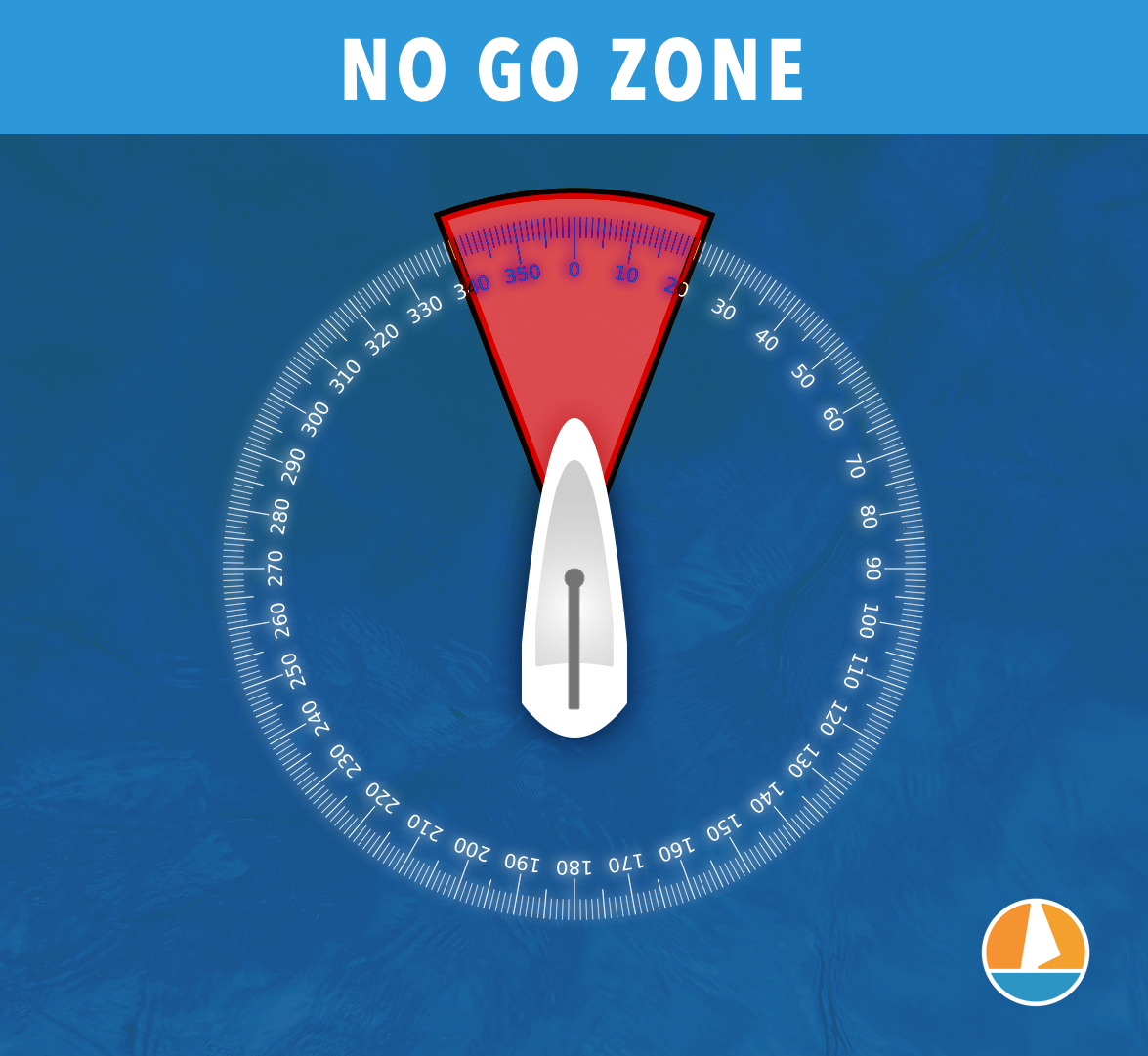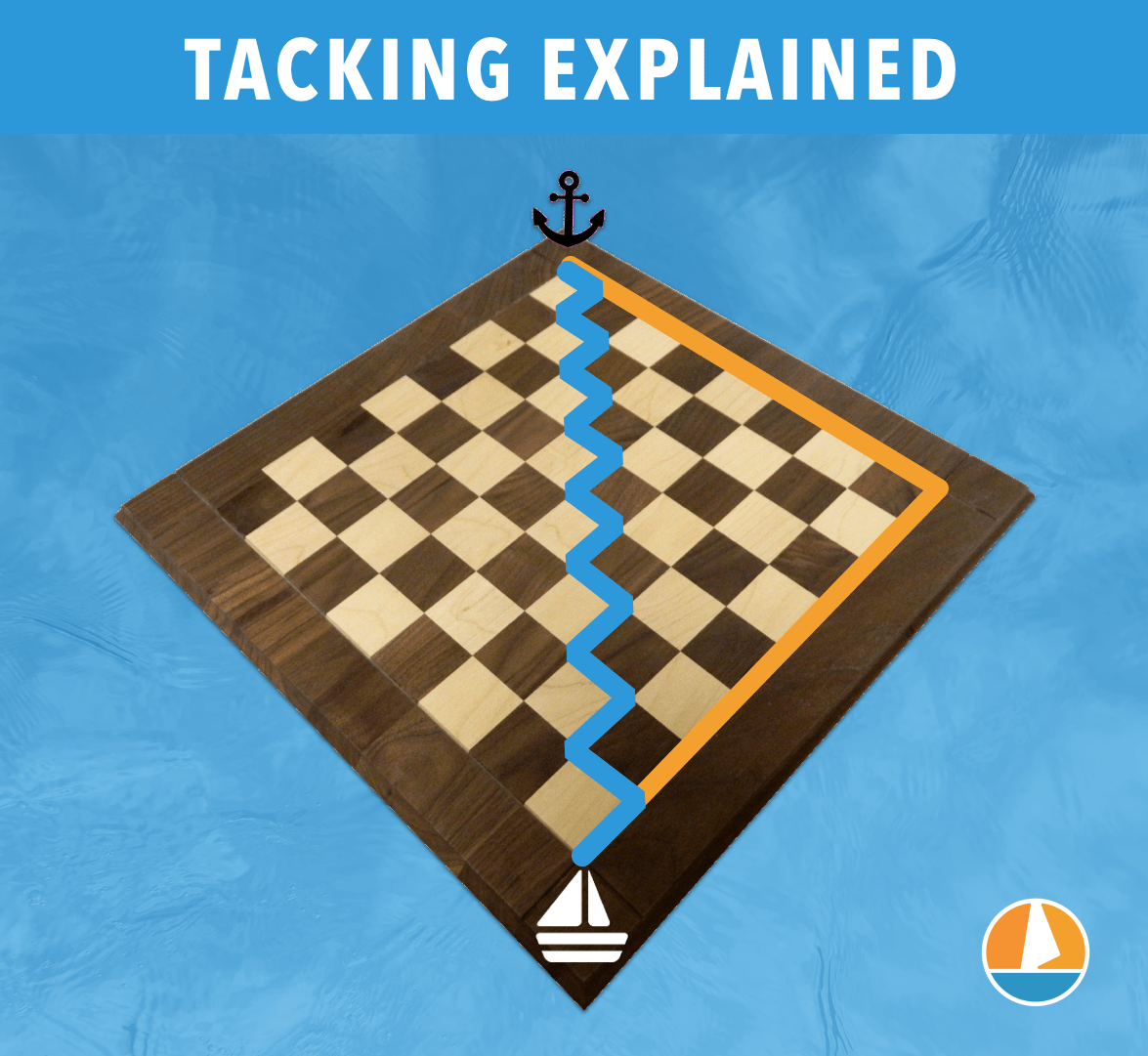How To Sail Into the Wind (in 7 Simple Steps)
Sailing into the wind seems like Poseidon's magic, but once you learn how to set up your sails and hold the correct course, you can do it. This article explains the technique in 7 simple steps.
How to sail into the wind?
- Make sure your sails are close-hauled and tight
- Set your direction approximately 22 degrees from the direction of the apparent wind
- If you sail left from the direction of the apparent wind, your front sail should be on the left side and vice versa
- Your mainsail should be centered
- You can not sail directly into the wind, as there is an approximately 44 degree 'no go' zone' - 22 degrees from each side of the wind direction
- Because of that, if your destination is directly into the wind, zig-zag (tack) your way towards it, going 22 degrees left and then 22 degrees right
- During this zig-zag maneuver, you need to simultaneously change the boat's course and switch the front sail from one side to another
If you’re unsure what it all means, don’t worry. I will explain all the technical terms in the steps below.
It really isn't all that difficult once you remember these few steps. Plus it is a fun way to sail: the boat leans elegantly, the wind blows against you and you feel like the king of the seas.
So let's go through the steps in a bit more detail and make sure that next time you are out sailing, you can go wherever you set your mind to. Because that's what sailing is about - the freedom to do whatever you want.

On this page:
Make Sure Your Sails Are Tight
When I was on a sailboat for the first time and the skipper said ‘we’ll now sail against the wind’, I thought he’d gone crazy. It’s a sailboat. It uses the wind to move. Things don’t go against the wind. They go with it. Look at the leaves on the ground when it gets windy.
But soon I was proven wrong. Because when sailing into the wind, your sail doesn't work like a sheet that is simply pushed by the wind. Rather, it works like an airplane wing. That is why sails of boats going against the wind have approximately the shape of a wing - and that's what step 1 is all about - making sure the sails are tight and hold their form. No flapping around, no loose ropes.
The sails should also be close-hauled. Close-hauled means they are pointing almost straight back. Their direction is mostly determined by how you set them, not by the wind.
Determining The Right Course
I have a confession to make - you can't sail directly into the wind. That's just physically impossible. At least until somebody comes up with some new revolutionary sail system.
But here is the good news - you can have the next best thing - sailing almost into the wind. Precisely 22 degrees left or right from the direction of the apparent wind. Once you cross this imaginary line and steer your boat closer into the direction of the wind, your sails will start to flap around, lose their form and your boat will slow down.
Plus the boat will start shaking as the sails flap, it will all get noisy, simply put, you want to stick to those 22 degrees.

Don't worry, you don't have to bring a pen and paper to the helm and measure everything. The little V on the top of your mast along with the arrow that points into the wind, that's your best friend in determining the right direction. The angle of the V is precisely these 22 degrees times two.
So if the tail of the moving arrow overlaps one of the legs of the V, you are hitting the sweet spot.
If the tail is inside of the V, you are headed too much into the wind.
If the tail is too much outside of the V, you are still moving, but you aren't sailing as much into the wind as your boat allows.
Headsail Position Should Be Dead Center
The correct position of your mainsail is pretty clear. Have it tightly set right in the middle.
But what about your headsail? Your headsail is your front sail. This is mostly a jib. Even if it is as close-hauled as possible, you still have two places to put it - the left side and the right one. So what to do?
Well, the answer is pretty easy. If your sailing direction is left of the wind direction, you put the sail on the left. If you are sailing on the right side of the wind direction, you put the sail on the right.
Not much else to explain here. The tricky part comes when you need to switch sides. But more on that later.
Center Your Mainsail
As mentioned, the mainsail should rest in the middle. While sailing upwind, you don't need to manipulate it at all. That is unless you need to reef it during a storm. The important thing is to have it firmly set in one place. No wiggle room like would be the case if the wind was in your back. Remember, you are not being pushed, you are using your sails like wings.
Avoid the No-Go Zone
All that needs to be said was covered in the second step. As already said, you can't go directly into the wind and some 22 degrees from its left or right side.
By the way, this number 22 is not exactly set in stone. It differs slightly for different boats. Racers can go more into the wind whereas cruisers have to keep the angle wider.
But you can find out what your boat's angle is quite easily. Close haul your sails, make them tight and start turning into the wind. As long as they hold the wing-shaped form, all is well. As soon as they start to flap, your angle became too narrow. You've entered the no go zone.
So right before the flapping starts, that's the sweet spot.
Zig Zag (Tack) To Stay on Course
Obviously we have to address the important question here. What if your destination lies somewhere in the no go zone? Let's say the marina you want to rest at for the night is exactly where the wind is coming from. Dead center.
Well, since 22 degrees is the closest we can get to the wind direction, that's what we will do. Head left of your destination, sail for a bit, then turn and head right of your destination. Then left again, then right again. Dance around the center line and eventually you will get to your spot. If it sounds a bit abstract, see the picture below. This is called tacking.

How often you turn is entirely up to you. Whether you decide to turn just once (the red line), making your passage wide but with less effort, or whether you turn every two minutes, making the passage narrow (the blue line), won't influence the total distance covered.
As portrayed in the picture, going all the way to the right corner, turning and going straight towards the finish, or turning every time you reach the end of a single field has no effect on how far your boat will have to go in total. You pass the same amount of chess fields.
But know that each turn slows your boat down a bit and it takes time before it gathers speed again. So as far as time and energy goes, better keep it simple.
This means that the route you take will mostly be dictated by how wide you can afford your passage to be. If you find yourself in a narrow channel, you will have to switch directions often, if on the other hand you have nothing but open seas ahead, you are in luck.
When planning your zig-zag route, keep in mind that the wind will make you drift. Your boat will not travel in a straight line ahead, it will be pushed by the wind wherever it will blow from. Even though you are travelling upwind, since you are going 22 degrees off the wind's course, the wind is still pushing you from one side.
How To Tack to Change Direction
This zig-zagging means you will have to change directions. Especially for beginners, this is a potentially challenging maneuver and oftentimes has to be done with at least two people.
The reason it is a bit tricky is that you have to change the boat's course and switch the front sail from one side to another simultaneously within the shortest time you can. Why the rush? You don't want to hesitate because, during the turn, the boat goes through the 'no go zone', the dead angle where it won't be propelled by the wind. You will rapidly start losing speed. So you want to make sure you are on the right course as soon as you can.
Also, in this dead angle, the sails will flap and you don't want to expose them to this much, especially if the winds are too rough.
The best way to go about this is to have one person at the helm and two more at winches. Once the helmsman starts changing the course, the winch holding the front sail on one side should be released and the front sail should be winched in onto the other side. There will be a lot of sail flapping, especially if it is windy, but don't worry and just keep winching the sail in until it is nice and tight again.
A Leaning Boat
Don't worry, no more steps. Just a quick heads up. If you travel upwind, your boat will lean to one side. The windier it is the more it will lean. This is completely normal. Don't correct the course just because the boat's belly starts peeking out of the waves. The wind itself can't tip the boat over. I won't go into the physics of why that is, just know you are safe.
But be sure to have all your cabinets closed and keep the number of things that can freely move around to a minimum. Many teacups have been broken like this. It is also nice to inform those onboard that the boat will lean, especially if they don't expect it.
Feel like a Poseidon
It is precisely the boat leaned to one side, oftentimes so much that you can touch the water while standing behind the helm, and the feeling of speed, that makes this type of sailing so fantastic. As both the wind and the waves will be coming towards you, the boat's speed will feel much higher than it is. This makes sailing exciting as you feel like you are flying through the waves.
As opposed to downwind sailing where you hardly feel any wind, since you are traveling with it.
Lift Explained (Ok, but how is all this possible?)
Right. I still haven't explained that. Well, as said in the beginning, you aren't being pushed by the wind, you are, as it were, being sucked into it. I know intuitively this makes little sense but if you bear with me through this little physics lesson, you'll understand it.
As mentioned, a tight sail on a boat going upwind has approximately the shape of an airplane wing. See the picture for illustration.

Because of this shape, the wind on the shorter side has to travel slightly slower speed than wind on the other side. This results in high pressure on one side and low pressure on the other. And as with anything, where there is low wind pressure, things are being sucked in. That's why the tight close-hauled sail is so important.
The reason why your boat doesn't just go sideways is your keel. It compensates for the suction by pushing the boat and the powers combined result in the boat going more or less forwards.
Conclusion
So there you go. The whole thing really is not that complicated. As with everything, go out there and practice a bit. The main things to get a feel for are keeping the correct angle so that you take advantage of the wind as much as possible and mastering the direction change. It is easier to practice in slower winds before you give it a full go.
Related questions
How to sail downwind? If the wind is in your back, you just open up the sails as much as you can and let yourself be pushed. Sometimes a spinnaker is used, which is a special balloon-like sail used in back winds. Sailing downwind is easier for many sailors as the whole thing is a bit more intuitive. So it is easier to set up the sails correctly.
How was this done in the olden days? The Chinese were able to sail upwind very early on. Some medieval European designs on the other hands were only able to take advantage of downwind. This then really depends on the particular designs. Just as with any technology, some cultures got the hang of it sooner than the others. One thing is for certain though, the ability to sail upwind is not a modern matter.
So take advantage of the ancient wisdom, get out there and enjoy!
Did you find the answer to your specific question?
👍 38 👎 3


Leave a comment